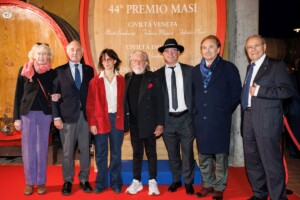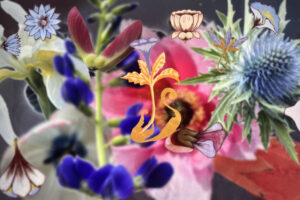Bees are becoming city dwellers. Beehives abound in the centers of the largest cities in the world. After New York and Paris, London is getting its swarm of bees. The hives will be placed on the roofs of the London Stock Exchange, home of the English Stock Exchange. Over the next few days, 100.000 workers in their yellow and black “uniforms” will mix with stockbrokers in double-breasted suits and bowlers in an eccentric experiment of urban beekeeping.
Xavier Rolet, head of the London Stock Exchange, started the initiative because of his personal passion for beekeeping: “it is a small contribution,” he told the newspaper Independent, “to try and stop the mysterious death of bees” that has reached record levels, especially in Europe and the United States, perhaps partly because of the pesticides used in the countryside. The honey with the prestigious label “LSE” will be distributed as gifts to companies listed on the Stock Exchange.
“We hope,” Rolet said, “that the position of the Stock Exchange building in the heart of the City with a view of St Paul’s Cathedral will be warm enough to allow swarms of bees to get through the winter flying from flower to flower in the parks and terraces of the city on the Thames”. With the two hives in the City, Rolet aims to use the same method he uses for the colony of 50.000 bees he raises in Provence. The head of the LSE is not the only passionate beekeeper in the United Kingdom, though: the former governor of the Bank of England Robin Leigh-Pemberton, and the Minister of Productive Activities, Vince Cable are enthusiastic about their hives. The Japanese investment bank Nomura has installed two beehives on the roof of their headquarters in London and so has the Tate Modern and St. Pancras station (where Eurostar trains leave for all European destinations). Rolet is French and urban beekeeping is normal procedure in Paris: Nicolas Geant, the famous, young French beekeeper, has theorized that bees now live in the city better than in the countryside, because although the cities are polluted, the flowers that grow there have not been treated with pesticides.
That is why a few years ago Geant got the idea of putting some beehives on the symbolic monuments of Paris: swarms of bees are already at work on the roofs of the Grand Palais and produce a wildflower honey sold under the brand name of the famous museum on the Champs Elysees. Honey is also being produced on skyscrapers in New York: the fact that there are beehives in the Big Apple is doubly remarkable because, until recently, New York was among the few cities that catalogued bees together with hyenas, tarantulas, wild dogs, cobras and other animals considered dangerous or poisonous to life in the city. Fortunately, the Department of Health and Hygiene has amended the sanitary code allowing residents to keep beehives of Apis mellifera, the common, non-aggressive honeybee. There are dozens of beehives, in unexpected places: a soul food restaurant overlooking Harlem or an Episcopal Church in Midtown. The honey produced on the skyscrapers is then sold at the fruit market in Union Square.
Copyright © 2000/2025
Contatti: info@winenews.it
Seguici anche su Twitter: @WineNewsIt
Seguici anche su Facebook: @winenewsit
Questo articolo è tratto dall'archivio di WineNews - Tutti i diritti riservati - Copyright © 2000/2025









































































































































































































